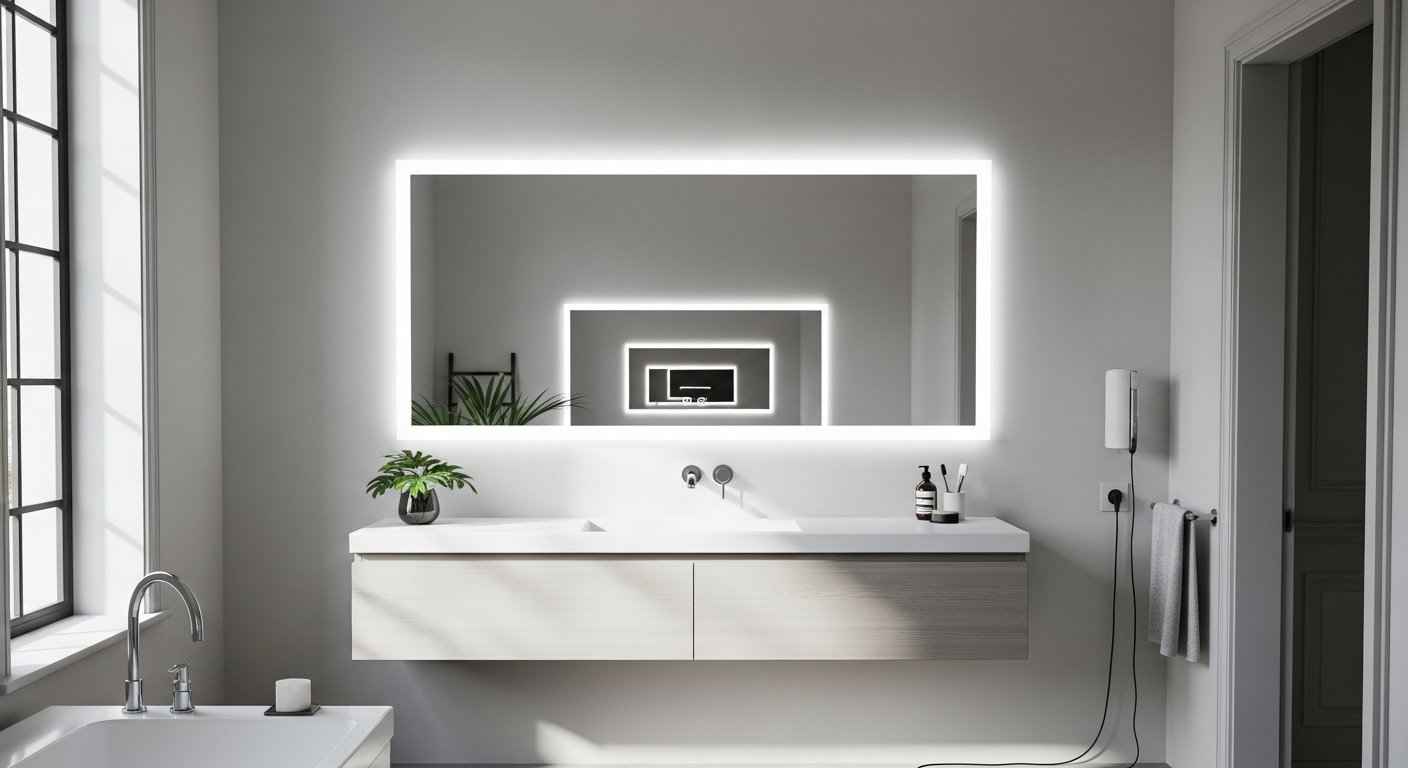Alright, folks, let’s talk about LED bathroom mirrors. It seems like these days, every time I walk into a new build or a high-end remodel, one of these sleek, illuminated beauties is staring back at me. And for good reason, too. What started as a niche product has truly become a cornerstone of modern bathroom design, offering way more than just a place to check your reflection.
- Why Choose an LED Bathroom Mirror? Essential Benefits
- Smart Features: Elevating Your LED Bathroom Mirror Experience
- Customizing Light: Multi-Color Temperature Settings for Your LED Mirror Bathroom
- Seamless Interaction: Touch-Free Motion Sensors and Dimming Controls
- Crystal Clear Views: Anti-Fog and Demister Technology for LED Bathroom Mirrors
- Beyond Reflection: Built-In Digital Displays in LED Bathroom Mirrors
- The Contractor’s Verdict: Making a Smart Investment in Your LED Bathroom Mirror
From my years on the job, I’ve seen these illuminated bathroom mirrors evolve from a simple light source to a fully integrated smart hub. It’s not just about looking good anymore; it’s about making your daily routine smarter, safer, and a whole lot more convenient. But with all the bells and whistles out there, how do you sort through the hype and pick one that’ll truly last and serve your needs? That’s where a little contractor wisdom comes in handy.
Why Choose an LED Bathroom Mirror? Essential Benefits

Before we dive into the fancy features, let’s nail down the basics. Why bother with an LED bathroom mirror at all when a traditional mirror and vanity lights have always done the trick? Well, in my experience, the difference is night and day. First off, an integrated LED mirror provides superior, consistent task lighting.
Traditional bathroom lighting often casts shadows, making things like shaving or applying makeup a real pain. With LEDs integrated directly into the mirror, you get even, front-facing illumination that minimizes shadows and truly highlights your face. It’s a game-changer for precision tasks.
Beyond functionality, there’s the sheer aesthetic appeal. These mirrors instantly elevate a bathroom, giving it a modern, clean, and often luxurious feel. They eliminate the need for bulky light fixtures above the mirror, decluttering the space and creating a minimalist look that homeowners really appreciate.
And let’s not forget efficiency. LED lighting is incredibly energy-efficient, drawing minimal power compared to older incandescent or even fluorescent setups. Over the lifespan of your bathroom, those energy savings add up.
Are they worth the extra cost? Absolutely, if you pick the right one. They’re an investment in both daily convenience and the overall value of your home. From my perspective, a quality LED bathroom mirror is quickly becoming a standard, not just a luxury, in modern bathroom design.
Smart Features: Elevating Your LED Bathroom Mirror Experience
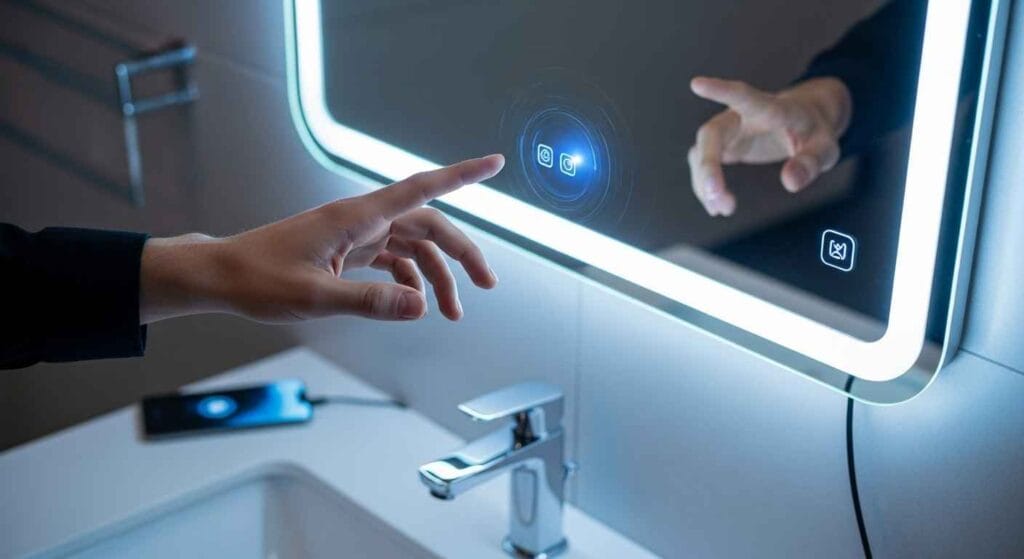
When we talk about an LED bathroom mirror setup today, we’re often talking about some serious tech built right in. One of the biggest advancements I’ve seen is the integration of Bluetooth connectivity and voice control. Imagine stepping into your bathroom in the morning, still half-asleep, and just saying, “Alexa, play my morning playlist,” and your mirror starts pumping out tunes.
Or perhaps, “Hey Google, what’s the weather today?” while you’re brushing your teeth. This isn’t science fiction anymore; it’s a reality with a smart bathroom mirror.
I had a client on a recent project, a young tech professional, who insisted on a mirror with full smart home integration. We installed a model that seamlessly connected to her existing smart ecosystem. She loved being able to control her lights, music, and even hear news briefings directly from her Bluetooth mirror without ever touching her phone. It truly streamlined her morning routine.
Of course, you need to consider your home’s Wi-Fi stability and, frankly, your comfort level with having a microphone in your bathroom. While the convenience is undeniable, I always tell folks to think about privacy and how much “smart” they really need in that space. But for those who embrace the connected home, these features offer a fantastic level of convenience and personalization that a traditional mirror simply can’t touch.
Customizing Light: Multi-Color Temperature Settings for Your LED Mirror Bathroom

This is a feature that often gets overlooked, but in my book, it’s one of the most practical advancements for an LED mirror bathroom. I’m talking about multi-color temperature settings, allowing you to switch between warm to cool white LED options. Why does this matter? Well, think about what you do in your bathroom. Sometimes you need bright, crisp light for detailed tasks, and other times you want a soft, relaxing glow.
Warm white light, typically around 2700K to 3000K (Kelvin), mimics the soft, inviting glow of traditional incandescent bulbs. It’s perfect for unwinding in the evening, soaking in the tub, or creating a spa-like ambiance. Cool white light, often in the 4000K to 5000K range, is much brighter and more akin to natural daylight.
This is your go-to for makeup application, shaving, or any task that requires sharp visibility. Some higher-end illuminated bathroom mirrors even offer daylight white at 6000K or more, which is excellent for color matching.
The ability to shift between these color temperature settings means your mirror can adapt to your needs throughout the day. I always recommend looking for an LED mirror with a high Color Rendering Index (CRI) – 90+ is ideal. A high CRI means the light accurately represents colors, which is crucial for things like getting your makeup shades right. It’s a simple feature, but it makes a huge difference in the usability of the space.
Seamless Interaction: Touch-Free Motion Sensors and Dimming Controls
The next set of features that really sets a modern LED bathroom mirror apart involves how you interact with the light itself. We’re talking about touch-free motion sensors and dimming controls. On one hand, you have the hygiene factor.
After washing your hands, you don’t want to immediately touch a switch and leave fingerprints or transfer germs, do you? Motion sensors allow you to wave your hand or simply approach the mirror to activate the lights. It’s a small detail, but it makes the space feel cleaner and more advanced.
Then there are the dimming controls. This ties in nicely with the multi-color temperature settings. Being able to dim the light means you can adjust the intensity to suit any situation. Need a faint glow for a midnight trip to the bathroom? Dim it down. Need maximum brightness for a morning shave? Crank it up. Most mirrors offer step-dimming or continuous dimming via touch controls or even gesture control.
While touch controls are common, I’ve seen some units where the touch functionality can become less responsive over time or with moisture. That’s where a good, reliable motion sensor or even a smart home integration really shines, offering a more robust control method. The goal here is seamless interaction that enhances, rather than complicates, your daily routine with your smart bathroom mirror.
Crystal Clear Views: Anti-Fog and Demister Technology for LED Bathroom Mirrors
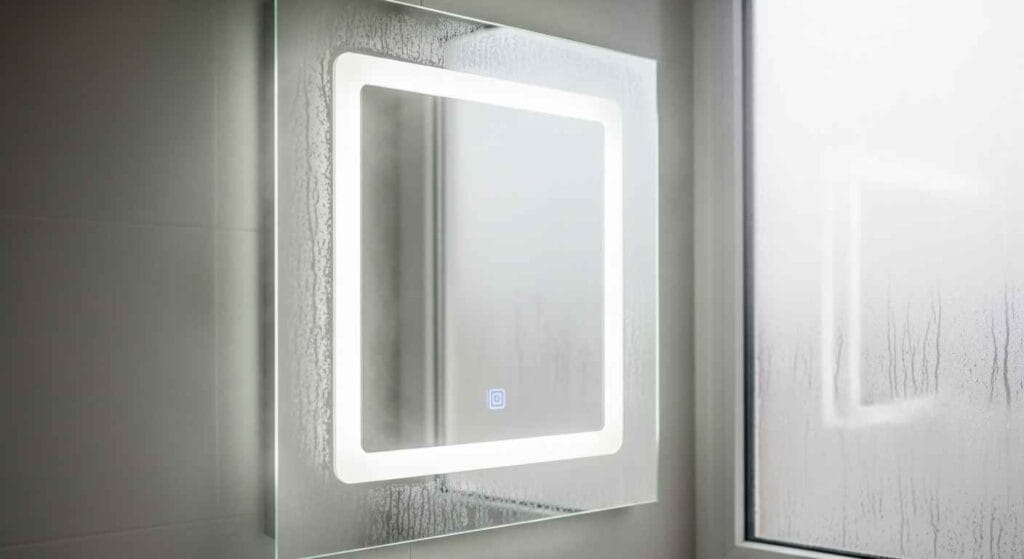
There’s nothing more frustrating than stepping out of a hot shower, only to find your mirror completely steamed up. It means wiping it down, which often leaves streaks, or waiting for it to clear, which wastes precious time. This is where anti-fog technology and demister pad functions come into their own for an LED bathroom mirror.
Essentially, these features involve a heated pad, typically mounted on the back of the mirror, that gently warms a portion of the glass. This slight temperature difference prevents condensation from forming on that heated area, leaving you with a clear patch of mirror even in the steamiest conditions.
Now, often the terms “anti-fog mirror” and “demister mirror” are used interchangeably, and for practical purposes, they refer to the same heating element technology. The difference is largely semantic or brand-specific. What’s important is that it works. On many jobs, clients initially consider it a luxury, but after experiencing it, they tell me they can’t imagine going back. It’s incredibly convenient, especially for those busy mornings.
From an installation standpoint, remember that demister pads require a separate electrical connection, usually tied into your light switch or a dedicated circuit. It’s not just a plug-and-play feature for most setups. Ensure your electrician accounts for this during rough-in, as it significantly impacts the mirror’s functionality and installation complexity. A quality demister pad covers a good portion of the mirror, giving you ample clear space to get ready.
Beyond Reflection: Built-In Digital Displays in LED Bathroom Mirrors
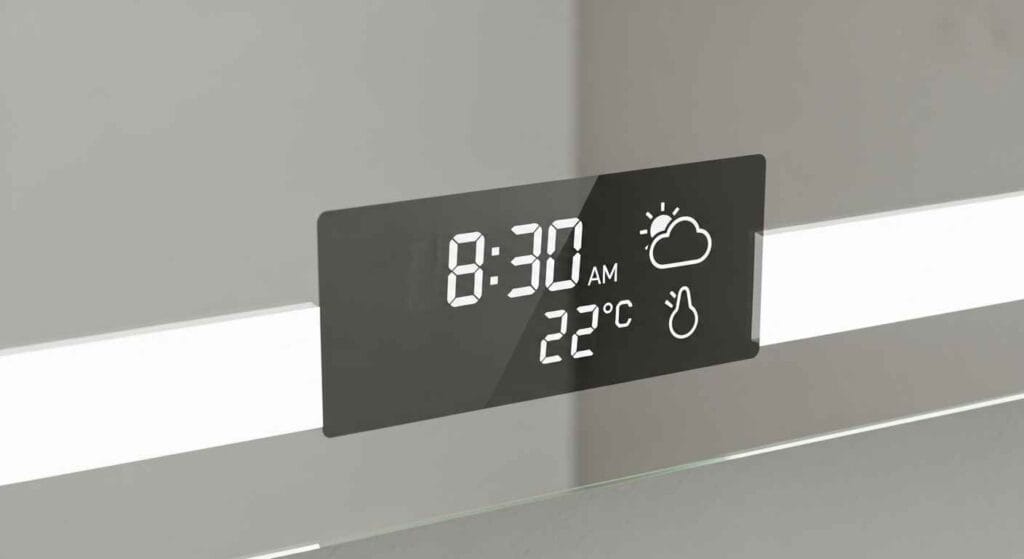
Stepping even further into the realm of smart functionality, some high-end LED bathroom mirrors now come with built-in digital displays that offer time, temperature, and even weather updates. Imagine getting ready for work and, without having to grab your phone, you glance at your mirror to see the current time, the bathroom’s ambient temperature, and whether you’ll need an umbrella today. It’s about integrating information into your routine where it’s most convenient.
These digital display mirrors often sync via Wi-Fi with external sources, pulling real-time data. While some might consider this a bit of a gimmick, for busy individuals, it can be a genuine time-saver. It keeps you informed without interrupting your flow. On one project, we installed a mirror with a display that even integrated with a client’s smart thermostat, showing him the house temperature at a glance.
For me, the utility really depends on your habits. If you’re constantly checking your phone for these updates, then having them passively available on your mirror could be a subtle but impactful convenience. As a contractor, I look at the reliability of these displays; do they maintain their connection, and is the information accurate? Most reputable brands do a good job, but it’s another point to consider when you’re making a significant investment in your LED mirror bathroom.
The Contractor’s Verdict: Making a Smart Investment in Your LED Bathroom Mirror
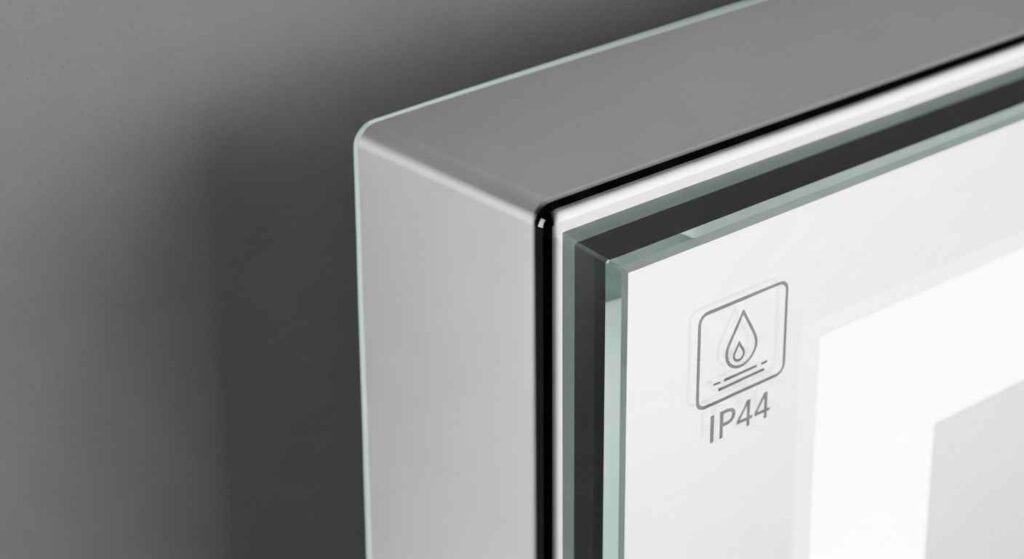
So, after all this talk about smart features, different light temperatures, and anti-fog tech, what’s my final take on choosing an LED bathroom mirror setup? It boils down to a few key things: durability, practicality, and your electrical setup.
Firstly, remember that this mirror is going into a bathroom, which is a high-humidity environment. You need a mirror that’s built to last. Look for IP44 ratings or higher, indicating resistance to splashing water. I’ve seen cheaper units start to flicker or have their LEDs fail prematurely due to moisture ingress. A quality mirror will have properly sealed components.
Secondly, don’t get swept away by every single feature. Prioritize what you’ll actually use. Do you really need voice control, or would dimming and a good anti-fog function suffice? Overly complex systems can sometimes be a source of future issues if not installed correctly or if software updates become a problem. Think about the core functions that will genuinely enhance your daily life and focus your budget there.
Finally, and this is crucial: electrical considerations. A basic LED bathroom mirror might just need a switched power source, but once you add demisters, Bluetooth, and digital displays, you’re looking at more complex electrical wiring bathroom. Many of these features will require a dedicated circuit, and all bathroom electrical components must be connected to a Ground Fault Circuit Interrupter (GFCI) for safety.
Never try to DIY the electrical work unless you’re a qualified electrician. I’ve seen homeowners get into hot water trying to splice wires behind drywall that wasn’t meant for it. If you’re undertaking a remodel, make sure your electrician is aware of all the mirror’s features so they can plan the wiring correctly during the rough-in phase. This will save you a world of headaches down the line.
Can you replace the LEDs in a smart mirror? Typically, no. Most integrated LED mirrors are sealed units, meaning when the LEDs reach the end of their lifespan (which is usually tens of thousands of hours, so a long time), you replace the whole mirror. That’s why picking a reputable brand with a good warranty (5 years or more is a good sign) is important. Investing in a good quality LED bathroom mirror isn’t just about illuminating your reflection; it’s about upgrading your entire bathroom experience for years to come. Choose wisely, and you’ll love it.
Are LED mirrors worth the extra cost?
Yes, in my professional opinion, a well-chosen LED bathroom mirror is absolutely worth the investment. They provide superior, shadow-free task lighting, enhance the modern aesthetic of a bathroom, and are significantly more energy-efficient than traditional lighting setups. The convenience of features like anti-fog and dimming also adds substantial daily value.
Do LED mirrors require special wiring?
It depends on the features. A basic LED bathroom mirror might just need a standard switched electrical connection. However, mirrors with demister pads, integrated smart features (Bluetooth, Wi-Fi), or digital displays often require a dedicated electrical circuit.
All bathroom electrical connections, including your LED mirror, must be protected by a Ground Fault Circuit Interrupter (GFCI) for safety. Always consult with a qualified electrician for proper installation.
How long do LED bathroom mirrors last?
The lifespan of an LED bathroom mirror is generally very long. The LED components themselves are typically rated for 50,000 hours or more of use. This translates to decades of daily operation.
The overall lifespan of the mirror, however, can also depend on the quality of the other components (electronics, anti-fog pads, touch sensors) and the environment it’s in. Buying from a reputable brand with a strong warranty is key.
What’s the difference between anti-fog and demister?
For practical purposes, “anti-fog” and “demister” functions in LED bathroom mirrors refer to the same technology. Both use a thin, electrically heated pad or film on the back of the mirror glass to gently warm a specific area, preventing condensation and keeping that part of the mirror clear even in steamy conditions. Any distinction is usually in marketing terms rather than fundamental technology.
Can you replace the LEDs in a smart mirror?
In most cases, no. The LEDs in modern smart bathroom mirrors are typically integrated directly into the mirror’s sealed unit and are not designed to be individually replaceable by the end-user or even by service technicians. The long lifespan of LED technology means this isn’t usually an issue during the mirror’s practical lifetime. If the LEDs fail, the entire mirror typically needs to be replaced, which emphasizes the importance of buying a quality product with a good warranty.




